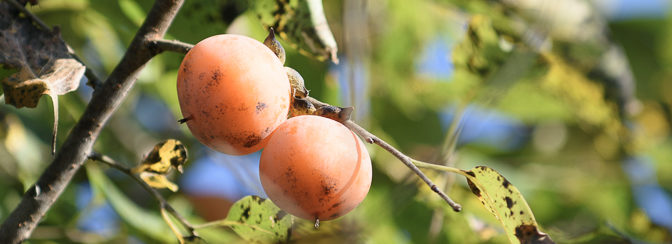Persimmon Videos
Growing Persimmons
Persimmons Attract Deer
American Persimmon—The Super Tree?
We’ve seen a lot of weather extremes in the past twenty years, including record-breaking heat, cold, floods, droughts, and wind. Extreme weather has taken a heavy toll on tree crops in some years. In 2003, a hard freeze in mid September destroyed almost the entire chestnut crop in Iowa. In May of 2005, a hard freeze in late May wiped out crops from apples, pears, peaches, plums, cherries, and even oaks, hickories, and walnuts, across the Midwest. The one tree crop that has never failed in all these years is persimmon. Even in 1996, when the temperature here plunged to -37 F (shattering the old record by 11 degrees) and all of the other tree crops failed, persimmons produced a normal crop! No other tree crop has been as reliable.
Persimmons produce a roundish fruit ranging from 3/4” to 3” in diameter. Unripe persimmons are hard, green, and notorious for being very astringent. When ripe, the fruit turns to an orange with a red blush, soft, and very sweet. Sugar content can be as high as 35%. Worldwide, persimmons are more popular than apples. Their popularity is reflected in their scientific name, Diospyros, which means “food for gods.”
Because of their softness when ripe, and their astringency when unripe, American persimmons are not well suited to a fresh fruit market, but persimmon fruit pulp has many uses. It can be used in pies, pastries, ice cream, and makes a fantastic pudding. Persimmon pulp sells at farmers markets, and to upscale restaurants, for $3 to $14 per pint, and demand greatly exceeds supply. With production capability of 10,000 pounds per acre or more, and unrivaled reliability, American persimmons have truly great potential as an ultra high-value crop.

